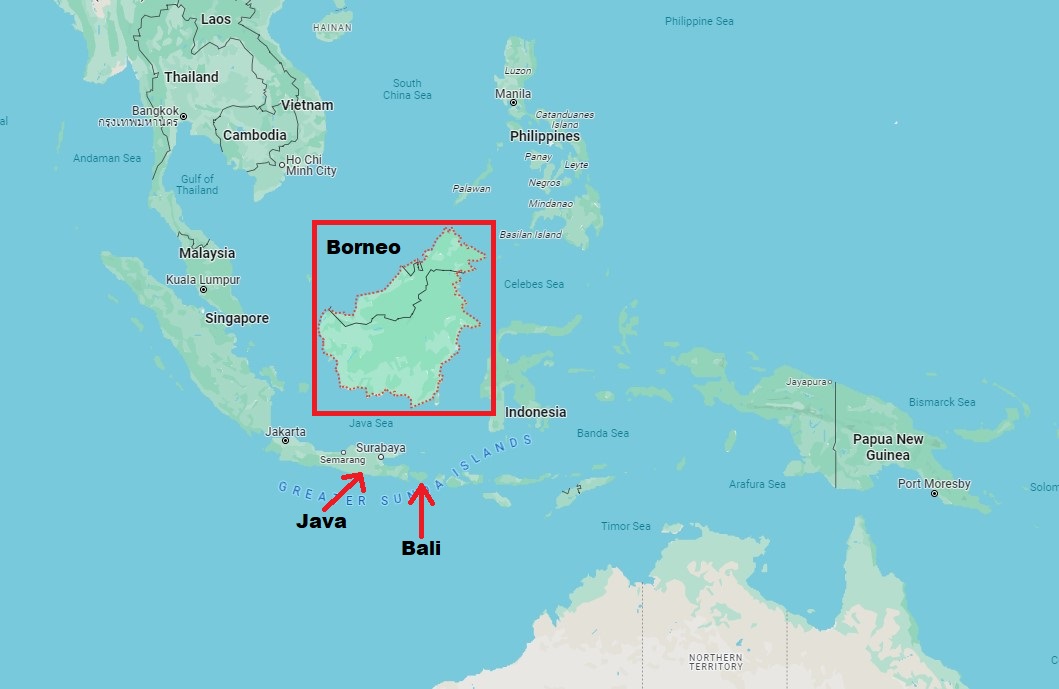Here's what Troy said:
We believe that this might be an authentic Dayak mask from Borneo. Aaron also informs me that we can’t be sure if it’s authentic because there have been quite a few re-created (fake) Dayak masks coming out of Bali and Java. (Source)
Going deeper
Troy wasn't completely sure! So he reached out to another expert, who suggested it might be a mask made by one of the Dayak peoples in Borneo. According to Wikipedia, Dayak refers to more than 200 different ethnic groups who live primarily in the central and southern regions of Borneo.
BUT Aaron isn't confident either, because replica masks are being made in Bali and Java to sell to tourists or uninformed collectors. Maybe if he was able to look at the mask in person rather than just a photo, he might be able to narrow it down further.
And here's a map, so you can see which islands we're talking about:


